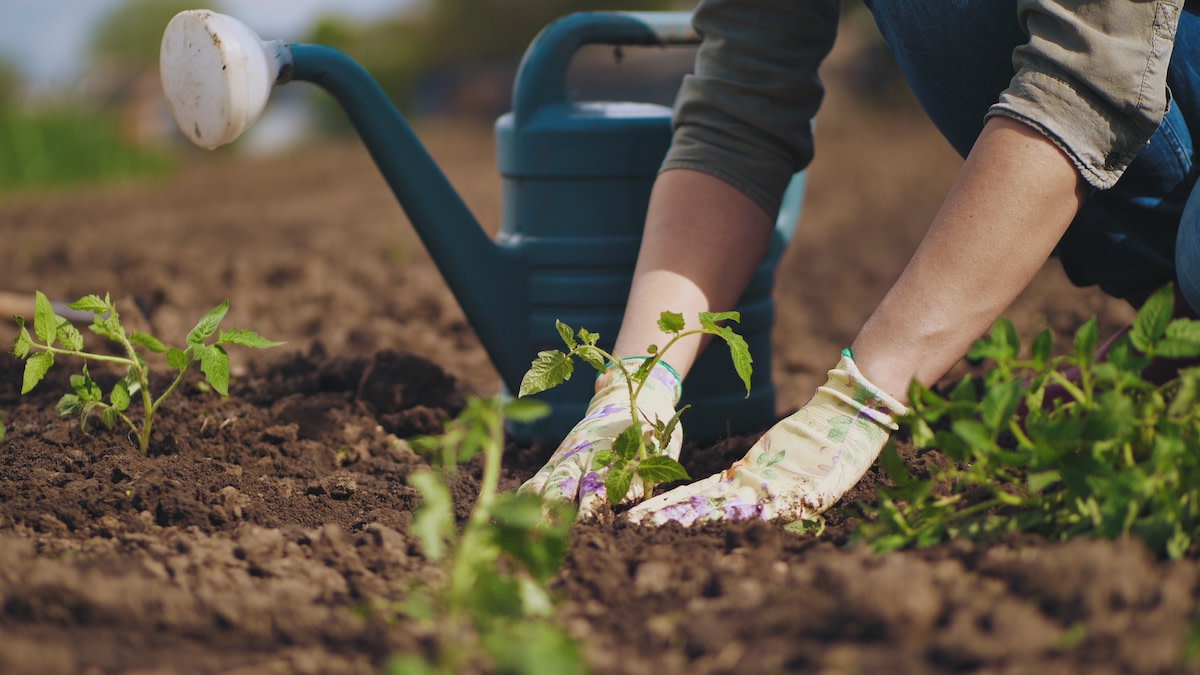4 Benefits of Using Horticultural Sand in Your Soil Mixes
Written by MasterClass
Last updated: Sep 8, 2021 • 3 min read
Gardeners use horticultural sand in their potting mix or soil to increase drainage and reduce water retention.
Learn From the Best
What Is Horticultural Sand?
Horticultural sand, also called coarse sand or horticultural grit, can include various materials, such as quartz, crushed sandstone, or crushed granite. This composition means it is lime-free, so it will not adversely affect the pH balance of soil but instead can actually improve it. Horticultural sand does not clump together like traditional sand because of its sharp edges and will not fill voids in the soil. This can make it useful for improving drainage and helping to maintain good aeration (airflow) around the roots of your houseplants or outdoor plants.
Horticultural sand is most effective when you combine it with clay soils and other heavy soils that perhaps don’t drain as well as loamy, nutrient-rich soils. If you want to slow the rate of water drainage, one DIY option is to use a top dressing of mulch or peat moss, which will retain the water somewhat before it can travel downward through your mix of horticultural sand and soil.
Pre-mixed horticultural sand can be difficult to find and expensive, particularly when compared to play sand, silica sand, or fine sand.
4 Benefits of Horticultural Sand
Horticultural sand’s coarse composition can make your soil more hospitable to your outdoor or indoor plants. Here are four potential benefits to using horticultural sand in your garden or potting mix:
- 1. Balanced pH levels: Some plants prefer acidic soils, while others do not. By hand-mixing or procuring a horticultural sand with specific ingredients, you can address your own soil’s pH levels. For example, you can raise the pH of soil by applying a sand with alkaline ingredients, such as lime; or you can lower the soil pH by applying a sand that contains acidic ingredients, such as types of grit treated with trace amounts of ammonium sulfate.
- 2. Effective composting: Because horticultural sand dries out quickly and encourages aeration of the soil, it can be an effective ingredient to use in composting, especially composting mix for your garden. Properly draining and aerated soil is necessary to compost organic matter that might otherwise rot if airflow is poor.
- 3. Improved drainage: Mixing horticultural sand with your landscaping soil or clay soil enables rain and other water to move through the mixture more freely, preventing water from sitting or standing around root systems (which can lead to root rot). It can also improve drainage for houseplants—small succulents kept indoors, for example, will benefit from a well-draining soil.
- 4. Increased aeration: Heavy rains can leave soil—especially clay-rich soil—waterlogged and compacted, with little room for the growth of healthy root systems or beneficial microbes. To aerate soil, gardeners can puncture the earth with a rake or another type of aerator tool. Another option is to use horticultural sand, which resists clumping and enables moisture to drain away or evaporate. The oxygen-rich soil will then be more hospitable to plants and microorganisms.
5 Alternatives to Horticultural Sand
Horticultural sand can be costly and hard to find. Here are some alternatives that you might find at your local garden center:
- 1. Builders sand: Made up of big grains of silica, builders sand can work as an alternative for horticultural sand, especially if you pick a coarse option.
- 2. Grit: Due to having a higher salt content than horticultural sand, grit requires rinsing before you can mix it into soil so as not to expose your plants to high amounts of sodium, which can be harmful.
- 3. Sharp sand: Unlike play sand, which you find on playgrounds, sharp sand bypasses a smoothing process. Sharp sand is similar to horticultural sand in grain size and drainage ability, but it can contain lime or salt, both of which will affect your soil’s pH levels and may cause problems for seedlings or even mature plants.
- 4. Perlite: A volcanic rock, perlite is similar to pumice. Commercially available perlite is a good additive to a horticultural sand or compost mix as it holds air well, helping to minimize the amount of water that lingers in your soil.
- 5. Vermiculite: Some gardeners use vermiculite—a highly absorbent mineral—instead of, or in tandem with, horticultural sand. Vermiculite can help to keep soil aerated and prevent it from compacting, which can be particularly helpful for gardeners who are seed starting.
Learn More
Grow your own garden with Ron Finley, the self-described "Gangster Gardener." Get the MasterClass Annual Membership and learn how to cultivate fresh herbs and vegetables, keep your house plants alive, and use compost to make your community—and the world—a better place.
